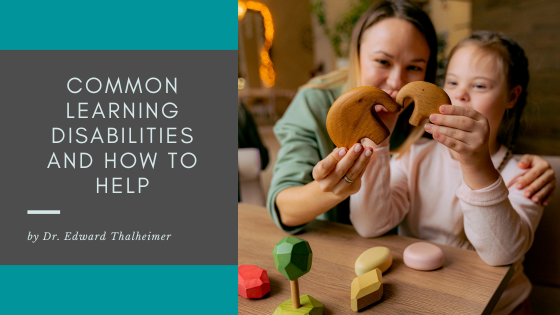Learning disabilities are neurodevelopmental conditions that affect a child’s ability to acquire and process information effectively. These disabilities can impact various areas of learning, including reading, writing, math, and comprehension. As parents, educators, and caregivers, it is crucial to understand the most common learning disabilities and how to provide appropriate support.
Dyslexia
Dyslexia is a learning disability that primarily affects reading and language skills. Children with dyslexia may have difficulty recognizing letters, associating them with sounds, and decoding words. They may struggle with reading fluency, comprehension, and spelling. Some strategies to support children with dyslexia include:
- Providing multisensory learning experiences that engage auditory, visual, and kinesthetic modalities.
- Using specialized reading programs or interventions that target phonics, decoding, and sight word recognition.
Attention-Deficit/Hyperactivity Disorder (ADHD)
ADHD is a common learning disability characterized by inattention, hyperactivity, and impulsivity. Children with ADHD may struggle with sustaining focus, staying organized, following instructions, and managing time. To support children with ADHD, consider the following strategies:
- Creating a structured and organized environment with clear routines and visual schedules.
- Breaking tasks into smaller, manageable chunks and providing frequent breaks.
Dyscalculia
Dyscalculia is a learning disability that affects mathematical skills and number sense. Children with dyscalculia may struggle to understand and manipulate numbers, memorize math facts, and solve mathematical problems. Here are some strategies to help children with dyscalculia:
- Using concrete materials, such as manipulatives and objects, enhances understanding of mathematical concepts.
- Providing visual representations, such as charts, diagrams, and number lines, to support problem-solving.
Dysgraphia
Dysgraphia is a learning disability that affects writing skills and fine motor coordination. Children with dysgraphia may struggle with handwriting legibility, letter formation, spacing, and organizing their thoughts on paper. To support children with dysgraphia, consider the following strategies:
- Encouraging assistive technologies, such as speech-to-text software or word processors with spell-check and auto-correct features.
- Providing alternative writing tools, such as pencil grips or adapted writing utensils, to improve handwriting comfort and control.
By providing targeted interventions, accommodations, and a supportive environment, we can help children overcome barriers and reach their full potential academically and personally.
Dr. Edward S. Thalheimer is the President and Founder of The Tutoring Center® Franchise Corp. For our part, we here at The Tutoring Center® are continuing to provide one-to-one instruction combined with The Rotational Approach to Learning® to prevent children from slipping through the cracks academically. Our programs help children achieve long-term success, build concentration and focus, and, with our outstanding instructors, find the love of learning. Don’t let your child fall behind this school year. If you’re interested in learning more, or you are interested in opening The Tutoring Center® in your community and joining a team of more than 120 franchise locations nationwide, please visit our website at TutoringCenter.com
